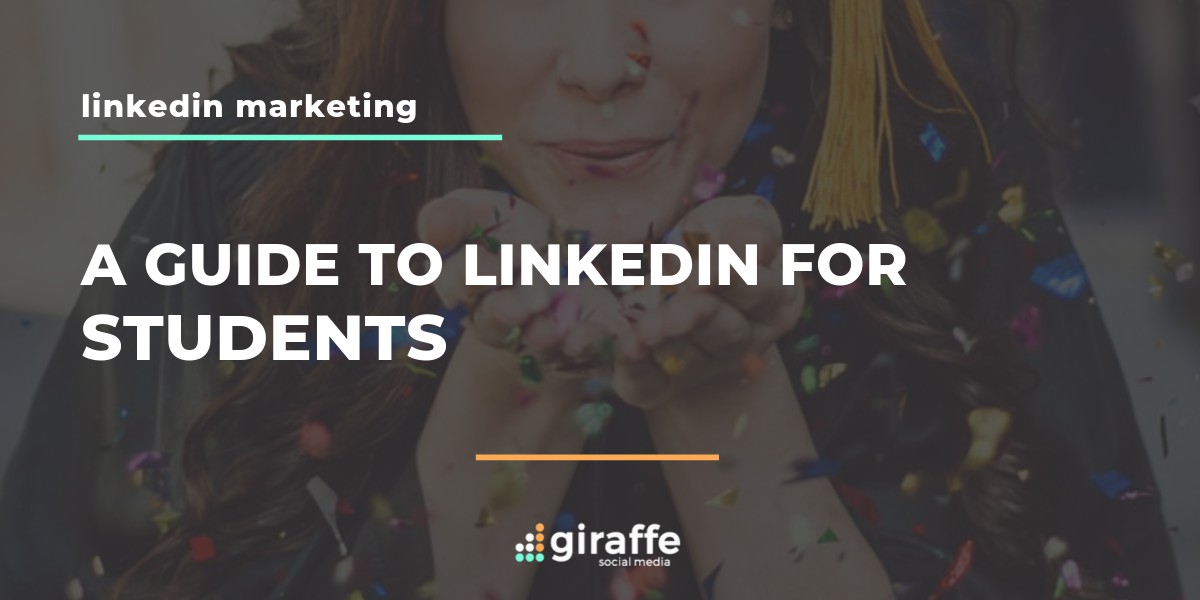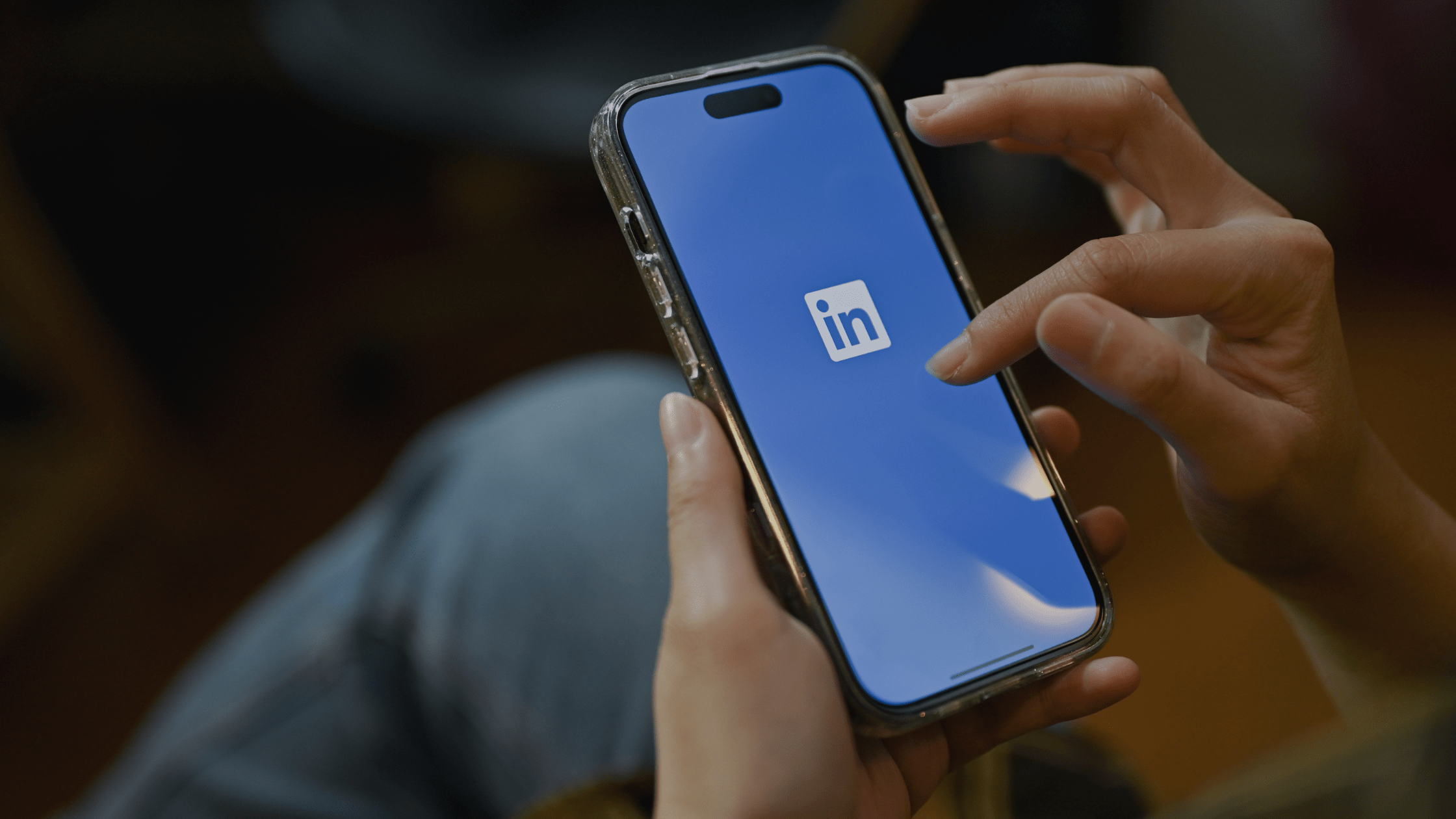LinkedIn is not only a great platform for businesses to market their products and services, but also for students to build awareness to potential employers and build up their profile.
Lots of students already exist on Facebook, Twitter and Instagram, but many have not yet set up their profiles on LinkedIn. Others have a profile but have no idea how to use it. This means they’re missing out on all the great benefits the social media platform can have! Read more in our guide to LinkedIn for Students.
Why LinkedIn?
It’s a place to learn
LinkedIn gives users the potential to learn new skills with their LinkedIn Learning platform, which you can try for one month free. It provides you with unlimited access to over 15,000 online courses from LinkedIn’s own library, which they update regularly. This means you won’t be rewatching the same four videos and can access new material every week or so. With 15,000+ videos too, you’re definitely spoilt for us. They are made by expert instructors, who are passionate about what they do and want to teach others – much like your lecturers at university. However, the difference is you can learn in your own time via your desktop computer or mobile device. LinkedIn Learning gives you the opportunity to advance in your career and learn in-demand skills.
It helps you establish a presence online
Lots of jobs will ask you to enter your LinkedIn profile details when applying, so you have to make sure you have an account. Also, many jobs will let you apply by incorporating aspects of your LinkedIn profile too, like employment history and education. It acts as supporting evidence to your CV and some employers would rather see your LinkedIn profile, then an actual resume. Employers are likely to look at your profile to check out your skills and level of professionalism.
Being on LinkedIn is an easy way to have a digital presence, which is essential in this day and age.
Look for potential placements and employers
It’s not just employers that can look for you, you can browse companies you may want to work for too. If you’re heading for an interview, use LinkedIn as a tool to brush up on your knowledge of the business. You can see if you’d be a good match for the team and find out some of the information you’d like to know before even applying for a position.
Find your university friends and alumni
LinkedIn will help you find people who studied at the same university as you, so you can connect and widen your network. You can also see where people who studied your course are now working and get an idea of what path you want to go down when you finish university. Feel free to message alumni and find out their journey from university to career and get tips for your interviews and job prospects.
You can apply for jobs
If you’re tired of the lengthy process of job application sites, LinkedIn offers as alternative to the dreary web pages. As well as letting you use your profile to apply for jobs elsewhere, the social media platform also has its own section for job seekers! ‘Jobs’ is its own tab at the top of the site, alongside ‘Home’, ‘My Network’ and ‘Messaging’. The feature will let you search for jobs via keywords or location. LinkedIn will also suggest jobs vacancies based on your profile, and will collate other opportunities based on the jobs you’ve already viewed.
What can students do on a LinkedIn page?
Students can use their LinkedIn page to help share their successes while they’re at university. First in a piece of coursework? Celebrate it online! Shortlisted for a scholarship? Express your happiness! Discuss anything you think will help you develop professionally.
Creating an amazing Student LinkedIn profile
Fill out all the details
Make sure you fill out every detail on your profile, including your employment history and education. Also, fill out the Skills & Expertise area with keywords that employers may be looking for.
Also, when you first set-up a LinkedIn profile, it will ask you to write an intro, introducing yourself to anyone that comes across your profile. View this as almost the start of a cover letter, and make sure to sell yourself as a candidate or potential employee for jobs you want in the industry. Pick a compelling headline – tell everyone what you do in less than 120 characters, but with a personal or more unique twist on your work title. Ensure you pick an industry that’s closest to what you do too!
Finally, you must fill out the ‘optional’ summary, which helps you share a little more information on what you do and what you’ve done. Treat this like a whole cover letter, keep it brief but informative. Use it as an opportunity to discuss more of the work you’ve carried out and express any skills you’ve mentioned in the Skills & Expertise area. Do not let LinkedIn generate it for you, as this can look lazy and robotic.
Have a high quality, professional photo
Make sure your profile picture is of good quality, clear and professional. Ensure you’re wearing appropriate attire and are in a professional setting. It shouldn’t be overly or under-cropped and must be up-to-date photo of yourself.
Endorse other people’s skills
Make sure you endorse your friends, co-workers and fellow students’ skills, and ask them to return the favour!
Stay active
Make sure you’re posting regularly on your LinkedIn profile. This could be external links, personal achievements, university news and anything that you deem worthy of your LinkedIn account!
Share your own work
Use LinkedIn as a platform to share your own work – this could be snippets of university essays. You could also share any blog articles you’ve written, or if you work for the university newspaper, work you’ve carried out there too.
Make it your own
LinkedIn let you claim your unique URL to help you increase the amount of ‘professional results that appear when people search for you online’.
If you need any help with your LinkedIn profile, get in contact today.





